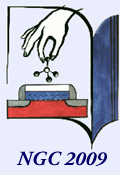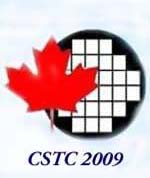
|
Nano and Giga Challenges in Electronics, Photonics and Renewable Energy | 14th Canadian Semiconductor Technology Conference |

 |
|
 |
|
|
Commentary
Welcome to the 14th Canadian Semiconductor Technology Conference (CSTC2009)! Established 25 years ago in Ottawa, the conference is an important symbol of the intrinsic strength of the Canadian semiconductor research and development community, and the Canadian semiconductor industry as a whole.In 2007, the 13th CSTC was held in Montreal, moving for the first time outside the national capital region. In 2009, we are looking forward to welcoming you to McMaster University in Hamilton, Ontario. As an integral part of the CSTC culture, the organizing committee will present the fifth CSTC Outstanding Achievement Award to someone who has made major contributions to semiconductor research and development in Canada. Our dedication to the development of young new researchers will again be highlighted by student awards, for the best oral and poster presentations by a student. The Organizing Committee invites scientists and engineers involved in research and development in technologies related to semiconductors to this meeting. We welcome researchers involved in basic and applied semiconductor and related materials research as well as those concerned with devices and industrial applications of the technology. We also promote interactions with the other communities that use semiconductor processing techniques (MEMS, organic devices, microfluidics, nano- and bio-technology). To further emphasize the importance of such links, CSTC-14 will be held jointly with the 4th International Conference on Nano and Giga Challenges in Electronics, Photonics and Renewable Energy (NGC2009). McMaster University, a world-renowned, research-intensive university, fosters a culture of innovation, and a commitment to discovery and learning in teaching, research and scholarship. Based in Hamilton, the University, one of only four Canadian universities to be listed on the Top 100 universities in the world, has a student population of more than 23,000, and an alumni population of more than 130,000 in 128 countries. The Faculty of Engineering at McMaster University has distinguished itself internationally for innovative educational programs and research. Established in 1958, its numerous institutes, centres and laboratories are collaborating on more than 100 research projects with the public and private sectors. The faculty is the ninth largest by enrollment of the 46 universities offering engineering programs in Canada. It is comprised of seven departments, three graduate schools, 145 faculty members, more than 3,700 undergraduate and graduate students, and over 12,500 alumni. |